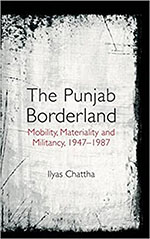The Punjab Borderland, drawing together an array of archival sources, traces the first ‘comprehensive social history’ of the Punjab border, straddling the states of India and Pakistan (p. 2). Through an extensive study of the border mobility and materiality from 1947 to 1986, it argues that the Punjab border was far more porous and accessible than generally assumed. Dispelling the dominant nationalist narrative, which has constantly presented the border as a marker of national territoriality and sovereignty, the book offers an alternative and local perspective on what it means to be a borderland space. Within this context, The Punjab Borderland explores the role of the contraband economy not only as a mode of grappling with the consequences of the Partition for the borderland societies but also as a way of enabling social mobility for the local population. It reveals a ‘subaltern’ history of the border which highlights how a local perspective can indeed supersede the national through the interventions made by locally oriented social and cultural spheres and can still carry transnational approach.
January 2023, volume 47, No 1

